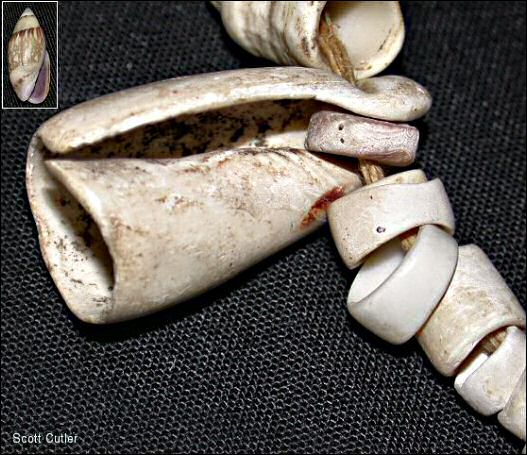

Most of us have little contact with snails, and we who think of them at all tend to visualize a classical, spiral-shaped little critter. This really does an unintended injustice to snails, who come in a huge variety of forms. Who realizes, for example, that abalones and conchs are snails? Our desert forms tend to be bit more conservative, conforming to the "classical" look, but do include kinds looking like small, spiraled grains of rice, while others form a disk.
Snail shells were used as ornaments for many of the native peoples of
the Southwest. Local species were hard to find in quantity, generally small, and lacked
the beauty of many marine snails. Instead, in our region, shells and shell beads were
imported from distant areas—especially the West Coast. Olivella shells were a favorite.
These oval shells average perhaps a quarter inch in length, but could be strung by
grinding away the apex of the shell or by cutting into disks. In archaeological sites,
these beads remind us that sophisticated trade routes go back far into
prehistory.

Contributor: Arthur H. Harris, Laboratory for Environmental Biology, Centennial Museum, University of Texas at El Paso.
Desert Diary is a production of KTEP, National Public Radio at the University of Texas at El Paso.

Olivella shell (insert in upper left) and a small section of a necklace
recovered from archaeological research. Centennial Museum specimens. Photographs by
Scott Cutler.![]()